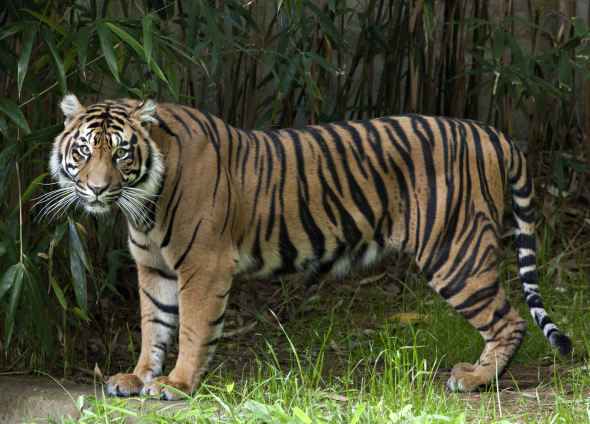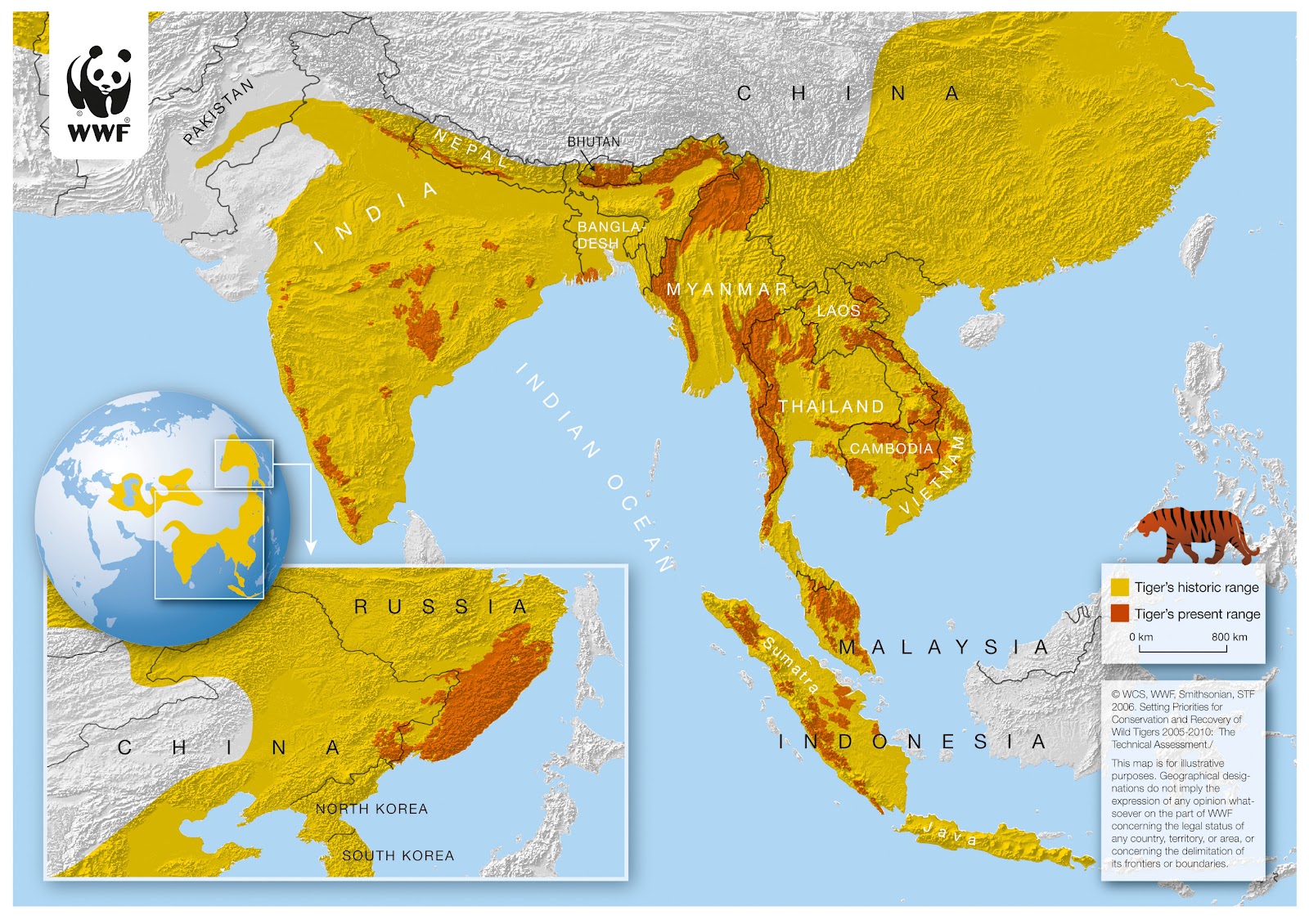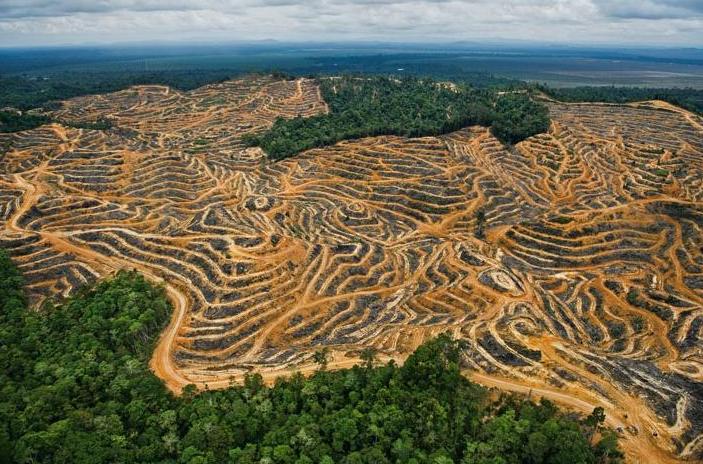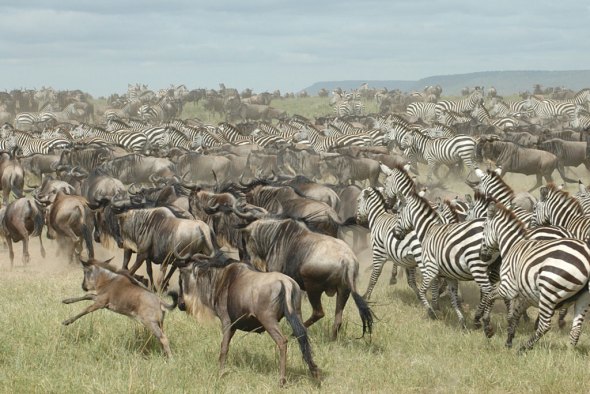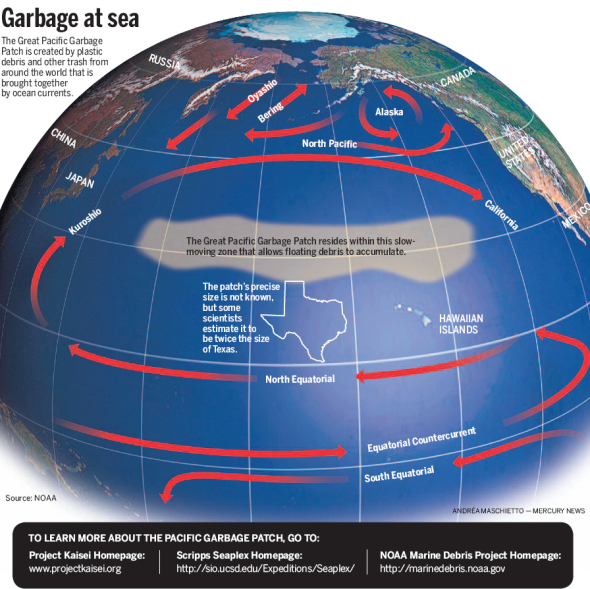Environmentalism Chapter 44 - Habitat Fragmentation
Habitual fragmentation is now the leading cause of concern regarding the nearing extinction of animals to colossal destruction of forests totalling exactly 80% of our flora and fauna internationally. This total is vast in size and there seems to be no decrease or plans implemented by governments to now slow the ever increasing environmental carnage down that’s killing and displacing many species of large and small mammals to tree‘s plant‘s, insects and micro-organisms that reside on 22.29% of the earths surface and 70% marine to fresh water. A total coverage of 196.9 million square miles of earth to date is under threat.
Habitat fragmentation is not being professionally addressed by government environmental agencies, ministries of water and affairs, transport authorities to public health. The Ministry of Defence too could also play a pivotal role in reducing environmental carnage that could cut human displacement down on a massive scale, by, “talking” instead of sending war head’s and troops to nuclear armed nations.
Conflicts only destroy more land, displace animals and human’s taking decades to rejuvenate these areas and increase economy thus decreasing crime. By this time the species of animals within these area’s have already been pushed to extinction. The Malian Elephant is now being poached although in small numbers due to their fairly small tusks as of the retched poverty stricken refugee camps that are set up when war occurs. Wildlife crime is seen as one of the only incomes.
Raging war’s regrettably displaces innocent civilians and animals caught in the middle of conflict zones thus moving them onto non-human non-habituated land that in turn pushes species of animals into other areas starting the ecological destruction circle of again, causing human and species conflict, thus increasing the destructive illegal wildlife trade ranging from Elephant’s to Rhinoceros, and Wild Felids to forests completely uprooted killing thousands of animals and medicinal plants.
Medicinal plants are important to both human and [animal] health of which also reduces the need for more species of primates, canines, felines to many more animals mostly domesticated being forced into a life of complete misery within experimental laboratories from which scientist’s and pharmacologists, to neurologists trial synthetic medication on.
The need for natural medicinal plant’s is so important within human and animal health too as they lack side affects of which “synthetic pharmaceuticals medicines” such as Dixarit, Chlorpromazine, Aripiprazole, NAISDS and more cause many secondary side effect’s within the human body, mostly gastrointestinal and central nervous system.
Knowing that habitual destruction and climate change that’s now more commonly known as “global cooling” is indeed affecting our environment and it’s natural inhabitants one would of believed that the not so caring government’s would now take this matter of serious concern up. However they are treating it as a taboo subject to merely passing the problems of on to non-profit and non-governmental rescue organisations and environmental units, universities and scientists alike that are struggling with public funding as it is or simply cannot cope with the spurge of destruction just for one species alone.
Picture below shows populations of Tigers and the historical loss of habitat that is now affecting many wild Tiger populations that are estimated in all at a depressing 3,600 if that. The Amur Tiger is only listed as 39 and has not been viewed within the wild for many years now feared possibly extinct. The Sumatran Tiger’s populations are decreasing because of palm, paper and pulp trade currently populated at a mere 500 although the last population census showed a “slight” increase since environmental investigations began within the area of Malaysia and Indonesia that had been conducted with the RSPO working to now eliminate violating companies although this is a very slow and costly process.
Habitat Fragmentation simply is;
Habitat fragmentation, as the name implies, describes the emergence of discontinuities (fragmentation) in an organism’s preferred environment (habitat), causing population fragmentation. Habitat fragmentation can be caused by geological processes that slowly alter the layout of the physical environment (suspected of being one of the major causesof speciation, or by human activity such as land conversion, which can alter the environment much faster and causes extinctions of many species.
There are many other factors that are responsible for habitat fragmentation too that are listed below;
Human overpopulation - 1960 saw an estimated world population size of only 3 billion in 1960, moving up to 1980 saw 4.65 billion. The increase really took of in 1995 at 5.47 billion persons then increased per five years of 1 billion more people. 2000 saw over 6.9 billion person’s with 2011 at 6.97 billion. 2012 saw an estimated whopping 7.9 billion with 2013 now standing at an estimated 8.1 billion (2013 still has to be officially tallied). The increasing figures though are not on the decline and every day see’s a rough estimated figure of 250.000 to 300,000 people born into the world.
Agriculture is also playing a massive role in habitat depletion. Looking at governmental data the total amount of square kilometres of land that was being farmed for 1961 stood at 38.93 million square kilometres. From 1961 the increase was rather slow although still noticeable that saw in 1975 39.58 square kilometres of land farmed displacing many species and killing of much green belt land and forest’s. Then the real uphill hike was viewed.
From 1985 the total land farmed both arable and cattle skyrocketed from 41.66 million square kilometres, to 1995 that stands at 49.38 million square kilometres farmed. The increase took of from 1991 shooting up to 1992 at almost 50 million square kilometres of land farmed for the entire planet. The only real small decrease was viewed in 2003 at 49.2 million square kilometres and from then on to date the total land farmed for the entire planet has fluctuated that stands at for 2013 50.1 million square kilometres farmed of land. The figures above are at “correct levels” now take a look again at the size of the earth that is “inhabitant by human and animals” standing at 22.2% exactly 196.9 million square miles of earth . We are most certainly looking at half of the worlds land taken by agriculture being the number one contributor to climate change/cooling, deforestation, habitat depletion, human species conflict, pollution, species extinction and more.
Evidence of habitat destruction through natural processes such as volcanism, fire, and climate change is found in the fossil record. For example, habitat fragmentation of tropical rainforests in Euramerica 300 million years ago led to a great loss of amphibian diversity, but simultaneously the drier climate spurred on a burst of diversity among reptiles.
The great causes of concern for habitat depletion known as fragmentation should be noted
Land clearance for roads and building’s.- Two such continents spanning from Kenya to Tanzania that boast’s a colossally high 1.5 million hectares of land in Africa holding an abundance of native and non-native mammals and non-mammalians is the Serengeti of which a massive stretch of land is now being looked into to plough an unnecessary road through that will not just see many animals murdered by speeding traffic, but migration route’s effected, slowed down, but most importantly the road is opening the land up for easy access to poachers and hunters.
Palm oil and on-land static oil drilling - Listed above as land clearance to, palm oil plantations both sustained and non-sustainable are playing a pivotal role in reducing wildlife such as the Bengal and Sumatran Tiger, Pygmy Elephant, to Orang-utans and many smaller primates, avian and reptilian species. Natural forestry is being reduced on a massive scale of which should both the palm oil and pulp and paper trade not decrease then 80% of all green forestry land from Indonesia, Malaysia, China to North and South America will lose thousands of animals, plants and trees from both palm oil and greed for demanding oil and petroleum want by governments and industries wanting to a quick buck.
Rural development/Urbanization - Housing has increased dramatically from 1960 to 2012 and that can clearly be seen by looking at the colossal levels of human overpopulation recorded by the (WHO) World Health Organisation and United Nations Environmental Programme (UNEP). There can be no official data actually seen for the “entire planet” with regards to rural development as not every nation undertakes an annual or five yearly census such as the United States of America and the United Kingdom for example. The estimated number of homes upon the planet from 2012 stands at 2.0 billion. To date and increasing rapidly.
One must also take into consideration that whilst wars are raging, poverty is increasing, and human rights are being updated of which more people are going to require homes from which a rough estimated tally of homeless people for the entire planet stands at 100 million (Still not re-homed). Add that to the 2.0 billion for the average 2-4 bedroom family homes and we’re looking at gargantuan problems with habitat depletion now and within the on-coming future decades. - The most depressive factor is urbanization. By 2050 it is predicted that 64.1% and 85.9% of the developing and developed world respectively will be urbanised. So in theory and looking at the statistics scientifically we are almost over 70% of land usage inhabited by many species internationally used [just for humans] and there is still no signs of decrease that the governments are “failing to acknowledge” to even taking seriously.
Transport and highways - 4.7M roads on 6% of the worlds’ land surface), this amount’s to around 80,000,000 roads. The more auto-mobiles and increase in population then sadly this figure is going to sky rocket rapidly. Roads are being built internationally on a vast scale depleting small rodents, reptiles, organisms, ripping up hundred year old trees, and, forests displacing avian species and bats that are most important to the ecological system.
Picture below shows how habitat fragmentation appears in the eyes of the wildlife that’s just had their homes removed. What would YOU do if someone now tore through your city in this manner leaving a trail of destruction? You would most likely go berserk. Can you understand why we become so angered at irresponsible humans that are not just Hippocratic they also destroy anything that lives that is merely not human. “Animals in some human’s lives” are simply least important. You can stop this however are you, that’s the question? Or are you prepared to view the “factual” 109.09 million square miles of earth destroyed for your children and their children to live within a concrete jungle with no wildlife? You wouldn’t treat you family in this way, so why treat Mother Nature like it?
The following data below is simply for 2003 of which shows a massive coverage of road surface that is in “miles”.
US - 3,905,000 total miles
Mexico - 153,000 miles
Canada - 528,000 miles
UK - 225,000 miles
Sweden - 85,000 miles
Germany - 395,000 miles
France - 504,000 miles
Japan - 704,000 miles
International Animal Rescue Foundation has applied for an up to date census from the top ten largest continents regarding road coverage so that we can formally update this thus working out mathematically exactly how much land has been depleted that’s pushing animals from their homes and uprooting green belt land, forests and more.
The depressing depletion of other land’s must also be noted as below.
The creation of hydroelectric reservoirs. Habitats which were once continuous become divided into separate fragments. After intensive clearing, the separate fragments tend to be very small islands isolated from each other by cropland, pasture, pavement, or even barren land.
The latter is often the result of slash and burn farming in tropical forests. In the wheat belt of central western New South Wales, Australia, 90% of the native vegetation has been cleared and over 99% of the tall grass prairie of North America has been cleared, resulting in extreme habitat fragmentation.
By 2100 we are seriously looking at an estimated 80-85% of animal land literally vaporised or human use and production unless professional controlled and monitored sustainable agriculture, urbanization, ruralisation is implemented with immediate effect to decrease this copious out of control destruction down.
Should immediate action not be taken to reduce vast habitat fragmentation then we will be looking at a 100.10% of the earth’s “land” left. This is based on scientific mathematical and environmental analysing of current and past trend’s from governmental, organisational, and industry past and present data.
Habitat fragmentation is serious and it will effect more of our larger species of animals first plus land that is non-human habitable such as forests and green belt land.
How does habitat fragmentation effect our nature though?
Habitat fragmentation in all aspects as defined above effects all flora and fauna both large scale and small, by pushing the species to extinction to forcing them into other inhabitant areas that then “moves them species on” effects the ecological cycle greatly or creates “species on species conflict”.
Habitat depletion also has unwanted effects for both animal and human by pushing the species into “rural or humanized areas” from which we then see human species conflict” as the species natural source of food has been destroyed because of human negligence and greed, demand and want.
Regrettably the animal’s are then punished most likely by being shot to death or recently within India we have seen since 2011-2013 a spurge of Leopard’s, Tiger’s and Bears roaming into rural areas looking for food thus tragically seeing conflict and sadly fatalities.
The animals are always seen as a threat in most cases and this is an area that International Animal Rescue Foundation’s Environmental teams within New Delhi are working to help as best they can utilising new technologies, educating and making aware in the rural areas out of the city on how to preserve the natural environment, working to now install communication’s that will alert prepared forestry rangers/or/ trained certified villagers with tranquiller rifles, to teaching and demonstrating what not to do and what to do in the event of a wild animal such as Tigers, Bear’s and other big cats roaming into “humanized zones”.
Picture above shows Wilder-beast and Zebras migrating through the national parks that also move through the Serengeti Should the road be built scenes such as this will simply be destroyed. Take action now and sing the petition here http://www.avaaz.org/en/save_the_maasai/
Working and communicating with forestry rangers and the governmental environmental departments we must clearly demonstrate and encourage professional wildlife management instead of taking the laws into one’s hands. Boundary fences, canopy trip nets, cell’s and even camera traps, double two way mirrors and much more are being utilised as best we can to preserve wildlife thus reducing extinction, whilst educating on the do‘s and don’ts.
Until we start an official funding programme for this particular phase of wildlife management then the programme will still only run slowly yet effectively and professionally. The last call came yesterday when enough was enough for us of which we received the most heart breaking news of two Bear cubs and one Mother cub plus eight humans murdered.
Sadly ignoring this area end’s up with both animal and human fatalities that could and can be avoided. Only Yesterday within a rural poor district of India (May 9th 2013) we was informed of two bear cubs that had strayed into a humanised residential area in search of food. They where caught then set on fire. Mother Bear then retaliated some days later which the park wardens took over eight days to take action on.
Eight people were killed by the Bear with the Bear later beaten to death by the angry mob of villagers. We are seeking action on this and will not allow this tragic accident and animal abuse to drop until those that were responsible for the killing of the two Bear cubs are brought to justice. Both animal and human life could have been preserved had the correct procedures been adopted instead of using and acting upon anger and rage.
Asiatic Lions, Orang-utans, Pygmy Elephants, African Elephants and African wildcats are also under attack as they again are either roaming within residential area’s, or farms looking for food that would normally of been within their own home. With no homes, and no food source then unfortunately they are tragically treated as pests. Traps and poisons are laid down thus seeing these species plundered further into extinction.
Asian and African Elephants are taking a serious battering from both the illegal wildlife trade as well as hunted as the hunter still believes “there are to many of them that are causing damage to one‘s land”. This is complete nonsense and should the hunter look further a-field and not use the “sustainable living” weapon then possibly we could all work together to now help these species before they are all pushed to extinction.
Our ecological world both plant and mammal to non-mammal, marine and micro-organisms are of the utmost important to us and Mother Nature. Should we lose our big five of Africa, wild felids, Whales, Dolphins, Seals and more all because of human negligence then we have seriously failed Mother Nature.
Failing to take the mass depletion of land seriously will eventually turn humans on to humans killing all of mankind and the most sensitive animal kingdom. For more information on how you can help you can contact us here at [email protected]
International Animal Rescue Foundation.
All rights reserved, all “names” of the Foundation and Speak Up for the Voiceless belong to the us of which no copying or transmission, abuse of our organisational “names” is permitted. 2013.
Act or view forced action to preserve our environment and children - Thank you
Environmentalism - Chapter 14 Plastic pollution
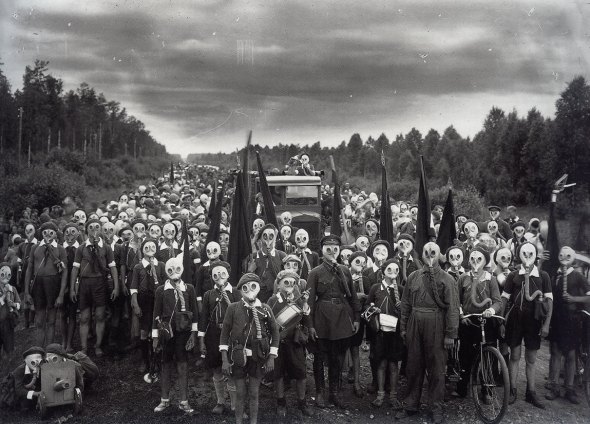
Environmental pollution will be the future war to come - Who’s the enemy? Ourselves!.
Plastic is taking its toll on our wildlife which is killing many species of marine life and harming smaller new born aquatic species crating a life of misery and pain which effects not just costal animals but land and avian to.
Pollution is not just responsible for flora and fauna death, please don’t just take me on that word, YOUR the one that’s (going to responsible) for the birth mutations, breathing defects, cancerous cells to form, to land invasion of our own waste. It’s OK though as most of you will just flick through this and not give a damn. The quote I am rapidly become pissed of with (we only live once) is starting to grind on me, WE MAY but what about our generation of children’s children and theirs to come?.
The average family of four mother and father and two children will consume in one week bathroom/toiletry/cleaning containers/packaging, non-essential food containers (e.g. takeout food containers), drink bottles/milk jugs, essential food containers/packaging and other miscellaneous plastic trash (e.g. candy wrappers, snack bars) and this is still in a recent survey form 2012 that sees no reduction in the amount. People this is serious and needs addressing urgently. These items do not include “outside the family too” of which in the commercial working world one is using by far more from water bottles, to food packaging or plastic carrier bags.
The worst offenders are the family and the hypermarkets which still are not being eco-friendly to our environment in cutting the usage of bags or at least offering some form of “bag drop of point” that the member of the public can walk freely in to the hypermarket and purchase or freely obtain a carrier bag thus reducing “production + carbon emissions + usage = (recyclability)
On average the American “individual” not (family) uses between 300 and 700 plastic bags per year we have picked America as they are in the top three polluting nations of the planet with China coming first and India third, and regrettably the (family) will use to the nearest figure based on governmental and consumer data twenty thousand carrier bags per year per that’s a lot and still much of this is not being reused, recycled or placed in the “recycling bin” that ends up in waste dumps or within the oceans.
Shoppers worldwide are using approximately 500 billion single-use plastic bags per year. This translates to about a million bags every minute across the globe used. (Think that’s shocking?).
- If you joined them end on end they would circumnavigate the globe 4,200 times.
- 100,000 marine creatures a year die from plastic entanglement and these are the ones found.
- Approximately 1 million sea birds also die from plastic.
- A plastic bag can kill numerous animals because they take so long to disintegrate. An animal that dies from the bag will decompose and the bag will be released, another animal could harmlessly fall victim and once again eat the same bag.
- The floods in Bangladesh in 1988 & 1998 were made more severe because plastic bags clogged drains. The government has now banned plastic bags.
- In Ireland they introduced a 15c plastic bag tax and reduced their usage by 90% in one year. It is now 22 cents. (Yet this method is not really being put to practice across the globe)
- There are believed to be 46,000 pieces of plastic in every square mile of ocean.
- There are 5 ocean gyres in the world where plastic gathers due to current circulation. These gyres contain millions of pieces of plastic and our wildlife feed in these grounds.
- Every year, 6.4 million tonnes are dumped into the ocean. This is the same as 3,200 kilometres of trucks each loaded with garbage.
- At least two thirds of the world’s fish stocks are suffering from plastic ingestion. (You still eating fish?)
The upsetting fact is this more than a billion people around the world do not have access to safe drinking water. Most countries that buy bottled water have the luxury of quality tap water, yet despite this YET! And here is the point that I really would like you all “pay attention to”.
Americans consume 8.6 billion gallons of bottled watered a year. Yet there are very few water holes in third world nations of which they are families “dying for water” and children “dying from lack of (clean) water” you have the choice to reuse your water bottle and obtain the water from a tap yet you simply throw it away as (it’s dirty?) or you listen to the likes of Alex Jones (non-educated) and other non-qualified environmentalists and geologists quoting water is unsafe as it contains (fluoride) – You seriously are kidding yes?
The Bottle TRUTH;
- FACT – every year Americans use 91,733,000,000 (BOTTLE’S of water a year)
- FACT – every year the entire globe use 563,829,000,000 (BOTTLES of water a year)
- FACT – for every 12 ounces of water bottled 36 ounces are consumed
- FACT – 40% of bottled water comes from the tap and 0% has to adhered to governmental standards
- FACT – every year 17 million barrels of water are used to produce bottled water, that’s 340 million gallons of gasoline
- FACT – only 1-5 bottles are recycled
- FACT – the other 4 contribute to the three billion pounds of plastic water bottles added to land fills
The plastic TRUTH;
- 12 million barrels of oil are used to make the plastic bags consumed in the U.S. annually.
- Plastic creates 4 times the solid waste vs. paper bags; enough to fill the Empire State Building 2 1/2 times a year.
- 88.5 billion Plastic bags were consumed in the U.S. last year.
- It takes up to 1000 years for plastic bags to biodegrade in our landfills.
- The average family of four uses 1460 plastic bags a year.
- An estimated 500 billion plastic bags are sold worldwide each year.
- Less than 1% of all plastic bags are recycled in the U.S.
- Over 100,000 birds and marine life die each year due to an encounter with plastic debris, much of it plastic bags.
- Plastic is getting into the food chain. Even the finest particles of plastic represent a threat to creatures at the lowest level of the food chain in the marine environment, the filter feeders. Then, toxins in filter feeders are passed up the food chain to fish and other marine animals, which humans then consume.
- Plastic is over-running our planet. Estimates run as high as one million pieces of plastic per square kilometre (0.6 mile) floating in specific areas of the Pacific Ocean.
- When one ton of plastic bags are reused or recycled, the energy saved is equal to 11 barrels of oil.
Paper Bag Facts
- 14 million trees are cut down to make the paper bags used in a year.
- Only 20% of paper bags get recycled.
- When one ton of paper bags is reused or recycled, three cubic meters of landfill space is saved and 13-17 trees are spared! In 1997, 955,000 tons of paper bags were used in the United States.
- Paper cannot be recycled indefinitely. It can only be recycled 4-6 times. Some virgin pulp must be introduced into the process to maintain the strength and quality of the fibre, so no matter how much we recycle we will never eradicate the need for virgin fibre.
- Paper is the number one material that we throw away. For every 100 pounds of trash we throw away, 35 pounds is paper. Newspapers take up about 14 per cent of landfill space, and paper in packaging accounts for another 15 to 20 per cent.
The graph below explains the number of liters of bottled water consumed to the number to “consumed bottled water” up to 2011 and this is one of the largest plastic environmental threats to our oceans to date.
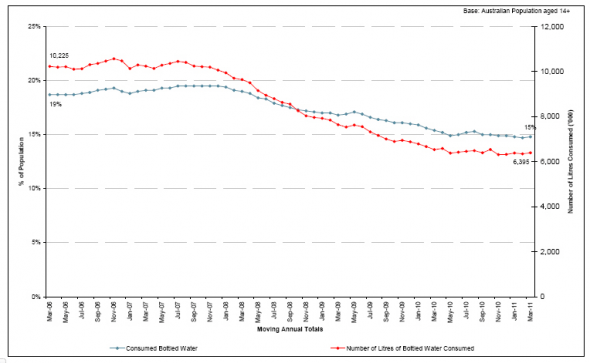
Recent research reveals that even remote areas of the oceans are affected by increasing levels of plastic waste on the seafloor. The study found that quantities of litter from human activities, mostly plastic, on the seabed of an isolated Arctic site, doubled from 2002 to 2011 which is very serious considering that there are many still (unsolved mysteries of the Arctic and few species too. We simply cannot afford to loose these specimens.
Researchers suggest that the problem requires immediate policy attention if we are to prevent levels of deep-sea litter increasing”
Around 60% of the Earth’s surface is covered by the seafloor, yet very little is known about how pollution has affected the deep ocean, in particular, remote areas such as the Arctic.
Despite a ban on solid waste disposal at sea in 1988, under Annex V of the MARPOL Convention1, research has revealed that even the most isolated environments are no longer free from litter.
Most sea litter is made up of plastic waste and more than 10% of the global production of plastics (over 265 million tonnes every year) ends up in the oceans, where it may remain for centuries and can cause potential danger to marine life through entanglement and suffocation. ‘Microplastics’, tiny particles of broken-down plastics, can also release a range of chemicals known to be harmful in high concentrations. These chemicals can be ingested by marine animals, including commercially-harvested prawns, mussels and fish, and enter the human food chain.
Researchers studied over 2,000 photos of the deep seafloor taken at the HAUSGARTEN observatory in the Fram Straight, off the west coast of Svalbard, a Norwegian island within the Arctic Circle. A camera took the pictures of the seabed whilst being pulled along a track at a depth of 2,500 metres in the years 2002, 2004, 2007, 2008 and 2011.
From the photos, the researchers could see that the amount of litter on the seabed doubled in the study period, from 3,635 to 7,710 items per square kilometre, with the majority made of plastic. To put this into some perspective, the density of litter had become greater than that reported in deep-sea canyons near Lisbon (6,600 items per square kilometre), the heavily populated and industrialised capital of Portugal.
67% of the litter affected sea life in some way, for example, through entanglement or by providing a base for organisms to grow on; with sponges and sea anemones particularly affected.
The origins of the litter are not clear, but climate change and the associated shrinking of ice levels may play a role. For example, increased access for fishing and tourist boats in the area may increase litter levels. In addition, a reduction in protective sea ice may also mean that litter drifts into the area more easily on sea currents and strong winds are able to blow waste from the land into the water. Litter levels are likely to increase in the future as global plastic production rises by 5% every year.
Although litter can provide shelter for a few species, it can also smother other species and release toxic chemicals. Litter on the ocean floor may also change the chemistry of the seafloor on a local level, for example, oxygen levels under plastic bags may fall. Furthermore, the ability of plastic litter to move long distances in the sea provides a perfect opportunity for alien species to invade remote areas, such as the Arctic, especially climate change.
The problem does not lie in the arctic though, the main problem is at home and now need to deal with this before we kill our ocean’s before even understanding them and the remaining deep sea mounts that contain an abundance of aquatic biodiversity.
http://ec.europa.eu/environment/integration/research/newsalert/pdf/313na2rss.pdf
“Plastic debris in the area popularly known as the “Great Pacific Garbage Patch” has increased by 100 times in the past 40 years”
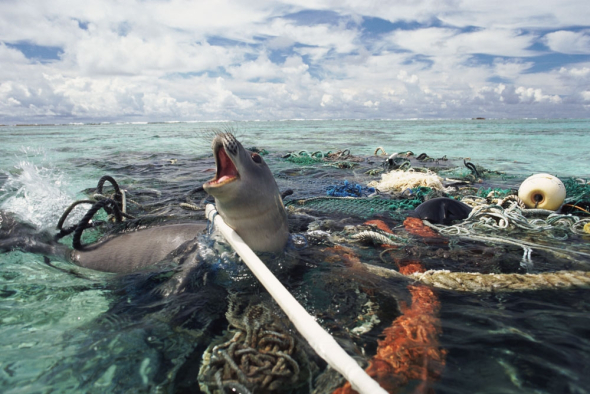
Here’s a look at some of the issues that add to the environmental impact of paper and plastic bags taken from several studies and sources listed at the bottom of this article:
Issue 1: Energy and natural resources
According to a 2007 study by Boustead Consulting & Associates, It takes almost four times as much energy to manufacture a paper bag as it does to manufacture a polyethylene bag.
Not only do both paper and compostable resin bags use far more fossil fuel in production and manufacturing, but they also use twenty times as much fresh water vs plastic bags.
Additionally, most paper comes from tree pulp, so the impact of paper bag production on forests is enormous. A 2008 article from the National Cooperative Grocers Association states that each year the United States consumes 10 billion paper grocery bags, requiring 14 million trees. Paper bag production delivers a global warming double-whammy; forests (major absorbers of greenhouse gases) have to be cut down, and then the subsequent manufacturing of bags produces greenhouse gases. However, plastic bags are not the more sustainable solution as they use more fossil fuels and raw materials energy, and consume larger amounts of crude oil and natural gas than paper bags.
Issue 2: Pollution
The majority of kraft paper is made by heating wood chips under pressure at high temperatures in a chemical solution. As evidenced by the unmistakable stench commonly associated with paper mills, the use of these toxic chemicals contributes to both air pollution, such as acid rain, and water pollution. The same goes for compostable plastic bags.
Issue 3: Recycling
Studies indicate it takes 91% less energy to recycle a pound of plastic than it takes to recycle a pound of paper. But recycling rates of either type of disposable bag are extremely low. In fact, 85-90% of paper bags are not recycled according to the Wall Street Journal, and 94.8% of plastic bags are not recycled according to a study conducted by Boustead Associates. The bottom line is recycling disposable bags still takes energy and resources - resources that could be conserved if more people simply switched to reusables.
Issue 4: Degradability
Many people choose paper over plastic because they believe it will biodegrade faster than plastic will break down in a landfill. However, there are a number of factors that determine how quickly, if at all, paper degrades – this includes temperature, pH, the type of bacteria present and the form of paper (shredded paper degrades faster.) That being said, it makes more sense to opt for a reusable bag that will last for thousands of uses over a disposable that will end up in the landfill.
FACT - In 2010 about 690,000 tons of waste HDPE plastic “bags, sacks and wraps” were generated in the United States, but only 4.3% of this total was recycled
FACT - Plastics do not biodegrade, but instead break down into small particles that persist in the ocean, absorb toxins, and enter our food chain through fish, sea birds and other marine life. (But then you knew that hence why pollution is shooting out of the roof)
FACT - Recent studies estimate that fish off the West Coast ingest over 12,000 tons of plastic a year.
FACT - The U.S. has the most pounds of trash per person per day (4.6 lbs of trash per person, 1.5 lbs of recycled materials per person)
FACT - Aluminum can be recycled forever with NO loss of quality (good thing since we use over 80,000,000,000 aluminum cans each year)
FACT - On a good point point - The greenest states are Vermont, Maine, New Hampshire, Nevada, Hawaii, South Dakota, Montana, Idaho, Oregon, and Colorado
PLEASE KEEP OUR PLANET AND OCEANS CLEAN AND GREEN
Dr J C Dimetri V.M.D, B.E.S, Ma, PhD , MEnvSc

